WORLD CHILDREN DAY: CHILDREN IN THE EYES OF THE HOLY QUR’ĀN

Al-Hafiz Yunus Omotayo ☑️ The Holy Qur’an guarantees the best of children rights e.g. right to life, right to education, right to proper social, moral, and spiritual upbringing and right to self honour and dignity etc. All this can be deduced from the verses which prohibit Muslim parents from destroying children’s life because or for fear of poverty. The verses say: ‘Kill not your children for fear of poverty.’ (Q. 6:152) ‘Losers indeed are they who kill their children foolishly for lack of knowledge.’ (Q. 6:141) And the Holy Prophet (saw) instructs thus: ‘Respect your children and bring them up in a good manner.’ (63)‘Train your children in respect of three things: love of the Prophet, his household and recitation of the Qur’an.’ (64) ☑️ The Qur’an bestows precious well-wishing, blessings and prayer on children by teaching us the prayer thus: ‘And those who say, ‘Our Lord, grant us of our spouses and children the delight of our eyes and make each of us a leader of the righteous.’ (Q. 25:75) And, although, the Qur’an has offered the following prayer specifically to the two noble prophets – Isa (as) and Yahya (as) – but it, in fact, contains the best of well-wishing and blessings which Qur’an desires for every Muslim child in his life. It reads thus: ‘And peace is on him the day he was born, the day he shall die and the day he shall be raised to life again.’ (Q. 19:16) ☑️The Holy Qur’an offers children the best of advice by following which can guarantee them peaceful, successful, fulfilled and realistic life. It says: ‘And We have enjoined on man to be good to his parents. His mother bears him with pain, and brings him forth with pain. And the bearing of him and his weaning takes thirty months, till, when he attains his full maturity and reaches the age of forty years, he says, ‘ My Lord, grant me the power that I may be grateful for thy favour which Thou hast bestowed upon me and upon my parents, and that I may do such good works as may please Thee. And make my seed righteous for me. I do turn to Thee; and, truly, I am of those who submit to Thee. Those are they from whom We accept their good works and overlook their ill deeds. They shall be among the inmates of the Garden, in fulfillment of the true promise which was made to them.’ (Q. 46:16-17) ☑️ The Holy Qur’an relates to children the most soul-inspiring stories of the past prophets so as to share from some of the moral and spiritual aspects of their lives. For instance, about Prophet Yahya’s (as) childhood, the Holy Qur’an relates how he was commanded by God thus: ‘O Yahya, hold fast the Book.’ It goes further to say thus: ‘And We gave him wisdom while yet a child, and tenderness of heart from Ourself, and purity. And he was pious. And dutiful toward his parents. And he was not haughty and rebellious. And peace was on him the day he was born, and the day he died, and peace there will be on him the day he will be raised to life again.’ (Q.19:13-16) Again, here is the story of Luqman and his little child whose name is said to be Tharan according to a narration of Al-Suhailiyy.(65) Qur’an tells that Luqman was a man upon whom Allah bestowed great wisdom. He however was not only grateful for this blessing of Allah but also used it wisely by teaching the wisdom to his child. Thus he taught his child to worship Allah and warned him against idol worship. He taught him spiritual ways and trained him in moral behaviours. Below is a glimpse of his wisdom as preserved in the Qur’an for the benefit of Muslim children. The Holy Qur’an calls our attention thus: ‘And remember when Luqman said to his son while exhorting him, ‘O my dear son! Associate not partners with Allah. Surely, associating partners with God is a grievous wrong.’ (Q. 31:14) ‘O my dear son! Even though it be the weight of a grain of mustard seed, and even though it be in a rock, or in the heavens, or in the earth, Allah will surely bring it out; verily Allah is the Knower of all subtleties, All-Aware.’ ‘O my dear son! Observe Prayer, and enjoin good, and forbid evil, and endure patiently whatever may befall thee. Surely this is of those matters which require firm resolve. And turn not thy cheek away from men in pride nor walk in the earth haughtily; surely, Allah loves not any arrogant boaster. And walk thou at a moderate pace, and lower thy voice; verily, the most disagreeable of voices is the voice of the ass.’(Q. 31:17-20) (An excerpt from my book titled: Memorization of the Holy Qur’an – Merits and Methods, p. 31-33) May Allāh make our children the true delight of our eyes and grant them the most blessed and best of lives and destinies in this world and the Hereafter. Āmīn!
THE ELUSIVE GLOBAL CALIPHATE: Why Mainstream Muslims have Failed to Re-establish Khilafat and the only Two Prophetically Recommended Options for Them
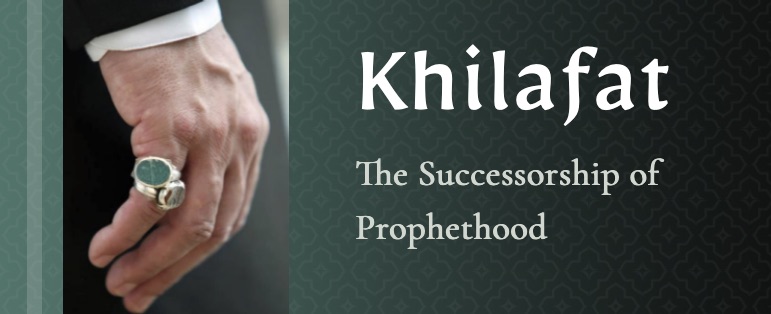
Al-Hafiz Yunus Omotayo The Holy Quran (24: verse 56) aptly christens the necessity of Khilafat as an indispensable divine leadership institution that must necessarily succeed the institution of prophethood to ensure continuity of the world edification of the faithful, their global unity, peace and security, the establishment of the monotheistic worship of Allah and entrenchment of His monotheistic world order on earth. In the same vein, an authentic Muhammadan Prophetic Tradition recognizes the necessity of Khilafat as it declares that: “Prophethood [nubuwwah] is always followed by the institution of successorship [khilafat] (Kanzul Ummal, vol. 11, No. 32246, p.470). In the light of this perspective, Prophet Muhammad (saw) also predicted the trajectory of leadership after him in the Muslim world as follows: Prophethood shall remain among you for as long as Allah wills. He will then cause it to end. Then a caliphate will be established in the precept of prophethood which will last for as long as Allah wills. He will then cause it to end. Despotic Kingship will follow. Its rule will last for as long as Allah wills. He will then cause it to end. After this tyrannical monarchies will follow. Their rule will last for as long as Allah wills. He will then cause it to end. The caliphate will again be re-instituted on the precept of prophethood. Thereafter the Holy Prophet [saw] became silent. (Musnad Ahmad, vol. 5, p. 342, No. 17939) The noble Companions of the Prophet Muhammad (saw) understood and recognized the necessity of Khilafat which was why, in the event of the demise of the Holy Prophet (saw), they saw to it that the day did not pass by before they had successfully established the institution of Khilafat on the precept of prophethood, which conferred the mantle of leadership upon Abu Bakar (ra), followed by Umar bn Khattab (ra), then Uthman bn Affan (ra) and, finally, Ali bn Abi Talib (ra). However, the ensuing political turmoil caused by some elements that lacked the understanding of the necessity of Khilafat led to the assignation of Ali (ra) in 661 and the establishment of the monarchical dynasty of the Umayyad in Damascus from 661 to 750. This was followed by the epochs of the major dynasties of the Abbasids in Baghdad [750-1258], the Sultanates of the Mamluks in Egypt [1260-1517] and including a number of relatively regional dynasties of the Ummayads in Spain [929-1036], the Fatimids in Egypt [end 1171], the Safavids in Persia [began 1501], the Seljuks [ended 1194], the Ayyubis [began 1171] and the Mughals in India [ended 1857]. However, with the 1924 abolition of the Ottoman Caliphate in Turkey by Mustafa Kamal Ata Turk, (a dynasty that had started since the 13 century and enjoyed leadership hegemony over vast sections of the Muslim world) the mainstream Muslim world met with an appalling fate of a global body with no global head to unite their diversity, protect the sanctity of their common Islamic faith and jurisprudence and their practice, inspire their visions, steer their affairs, settle their crises and conflicts and harmonise, coordinate their global agendas and continuously put them on the pedestal of sustainable global brotherhood, peace, development and progress. As a result, the contemporary Muslim world has since been bedevilled by instances of intra and inter-state conflicts and warfare, political upheavals, intra-religious conflicts, extremism, fanaticism and terrorism all of which have rained catastrophic consequences upon the lives and lands of the Muslims. Though, as available evidences show, there is reason to believe that the contemporary mainstream Muslims have very much realised the necessity of Khilafat. This is evident in the fact that, following the event of 1924, Muslim leaders and scholars have since been making successive efforts at re-establishing the Khilafat (unsuccessfully though) through appeals via books and articles as well as conveyance of ad-hoc conferences and establishment of movement for the re-institution of khilafat, like the Khilafat Movement established in Karachi, India in the 1940s. Notably, Professor Hans Hung, while speaking about such khilafat conferences which he referred to as Pan-Islamic conferences, noted that, in response to the 1924 abolition of the Khilafat, “Five Pan-Islamic conferences of religious scholars followed: in Mecca (1924), Cairo (1926), Mecca (1926), Jerusalem (1931) and Geneva (1935)—all without tangible results. After the Second World War, Pan-Islamism received fresh impetus with the foundation in 1949 of the Islamic World Congress in Karachi, in 1962 of the World Muslim League in Mecca and in 1970 of the Organization of the Islamic Conference in Jeddah as an umbrella organization for Islamic governments. However, none of these organizations was able to integrate the national liberation movements in the individual Islamic countries. In 1947, after the partition of India, Pakistan became the first independent Islamic state; others followed. The Islamic movements and conferences could at best spread the idea of solidarity among Muslims and warn of the need for a common solution to economic and social problems. But to the present day, the creation of an Islamic federation remains a daydream. (Hans Hung, Islam – Past, Present and Future, 2007, One World Publications, England, p. 456-457) Curiously, the recent notorious birth and death of the terrorist caliphate that saw Abu Bakar Al-Baghdadi enthroned by the ISIS terrorists does not only reveal an unbridled idiosyncrasy and desperation of some overzealous opportunists and a sheer attempt at misrepresenting the sanctified office of a true Khilafat before the global public, but further demonstrate the lingering failure of the mainstream Muslim public to deepen the scope of their conviction beyond their mere realization of the necessity of Khilafat in this age to their ultimate realization of the particular Khilafat that is of necessity for the contemporary time. It is worthwhile, and, in fact, interesting to note that, while the mainstream Muslims have continued to meet with failure in their almost hundred-year-struggle to re-establish a global caliphate, the worldwide Ahmadiyya Muslim Community has, however, been divinely and seamlessly blessed with the re-institution of global Khilafat based on the footstep of prophethood, exactly, as prophesied
Deformation and Reformation of Islam in the Modern Time [Part 7]
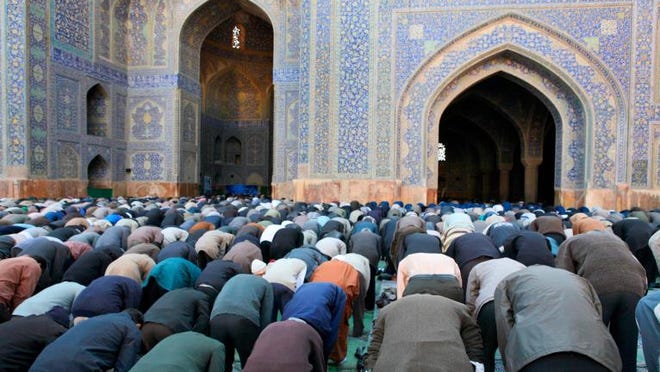
Al-Hafiz Yunus Omotayo Mainstream Muslims’ Misconceptions of Islam Versus Ahmadi Muslim Revivalist Thoughts (3) Misconceptions of Socio-religious Doctrines and Concepts [A] Mainstream Muslims’ Misconceptions of Islamic Jihad The belief and practice of conversion of the whole humanity and the establishment of Islamic states in the world through the use of force and violence is a deep-rooted and widespread agenda in the contemporary mainstream Muslim world. Muhammad Abdussalam Faraj, citing authority of the medieval Muslim scholar, Ibn Rajab al-Hanbali, declared that: “the saying of the Prophet: “I have been sent with the sword”, means that Allah sent him for the call of Tawheed of Allaah by the sword after his call for it by evidence. Sowhoever does not accept the call of tawheed (the Oneness of Allaah)by the Quran, evidence and eloquence, he will be called by thesword.” [41] Similarly, Maududi insists that ‘Anyone who wants to uproot mischief and disorder from the world and wants to reform mankind should realize that he cannot do so by mere sermonizing and counseling. It is useless. He should rise against the government of false principles, he should seize power, remove the wrongdoers from author and set up a government based on sound principles and just administration.’[42] Again, he declared that ‘If their Islamic state has power and resources it will fight and destroy non-Islamic government and establish Islamic states in their place.’ [43] Ahmadi Muslim Revivalist Thought Ahmadi thought opines that the philosophy and true nature of Jihad is a matter both complex and subtle. Grave errors have been made both in our age and in the middle age [of Islam]because people failed to understand the subject. [44] The Holy Quran clearly forbids the use of force for the spread of the faith and directs its propagation through its inherent qualities and good example of the Muslims. It maintains that people should not be misled by the notion that in the beginning the Muslims were commanded to take up the sword. That sword was not taken up for the spread of the faith, but in self-defence against the enemies of Islam and for the purpose of establishing peace and security. It was no part of the purpose of taking it up to have recourse to coercion in the matter of faith. [45] Ahmadi thought builds this position on various Qur’ānic verses among which is the verse that provides Muslims with the rationale and permission to fight in defense of the faith and freedom of religion and worship: “Permission to fight is given to those against whom war is made, because they have been wronged and Allah indeed has power to help them. Those who jave been driven out of their homes unjustly only because they say our Lord is Allah. And if Allah did not repel some people by means of others, there would surely have been destroyed clusters and churches and synagogues and mosques. (Q. 22: 40-41) It further maintains that, because the conditions for the Jihad with the sword do not currently exist, the Jihad with the sword is not permissible these days. [46] This is constructed on the conviction that swords can win territories but not hearts; force can bend heads but not minds. [47] [B] Mainstream Muslims’ Misconceptions of Ideal Martyrdom in Islam Another Islamic doctrine that has been subjected to such extremist re-interpretation and radically applied is the concept of martyrdom in Islam. This is evidenced by the so-called contemporary radical Islamist-Jihadists’ martyrdom operations or suicide terrorism, or the erroneously tagged ‘Islamic martyrdom’ achieved through the various terrorist groups and operations, internal civil wars or inter-state political wars being engaged in by some Muslim individuals, groups and governments in the name of Islam. This has come as a result of a major reinterpretation of the theological basis and religious law on martyrdom and the military jihad advanced by Shi’ite theologians and jurists in Iraq and Iran between the mid-1960s and the late 1970s.” Prominent among such Shia scholars were Ayatollah Taleqani, Dr. Ali Shariati, Nimatollah Salihi Najaf-abadi, Ayatollah Khomeini. Particularly, having invented a typology of Imam Husain’s martyrdom, which they re-interpreted as a self-imposed kind of martyrdom, they therefore went ahead to propound a new concept of martyrdom which sanctions self-annihilation, a suicide martyrdom which does not see martyrdom as shahadah i.e. a death unjustly and violently inflicted upon Muslim faithful by their opponents, but, as istishhadah i.e. one which Muslims personally desire for themselves as an expression of self-sacrifice for the cause of the faith. [48] Ahmadi Muslim Revivalist Thought Ahmadi thought redefined the pristine meaning of a true Islamic martyr or Shaheed “as the person who attains the power of steadfastness and resolve from God, that no upheaval or shock can shake him or move him from his stand. He bravely faces adversities and difficulties to the point that if, just for the sake of God, he has to give his life, then, he is given extraordinary resolve, and ever prepared to presents his head without any sorrow or disappointment. [49] In this light, it is thus obvious that the fundamentally true and ideal Islamic martyrdom as sanctioned by the Holy Quran and the Holy Prophet is the one which is attained principally as a result of peaceful profession of, adherence to and advocacy for one’s faith in Allah; conditionally, because one is engaging in struggle [jihad] to defend the cause of Allah; and objectively, because one desires to establish the supremacy of the Word of Allah on earth. Thus, Ahmadis safely conclude with conviction that there is no valid Quranic and Prophetic evidence which provide sanction and justification for conceiving or depicting as fundamentally Islamic martyrdom: (1) the deaths of Muslim soldiers, rebels and insurgents who fall in the course of political wars waged for gaining political power or other worldly objectives; (2) the martyrdom operations or suicide terrorism being perpetrated by various so-called Muslim Jihadist/Islamist groups of Al-Qaida or the ISIS or Al-Shabbaab and Boko Haram etc. Furthermore, Ahmadi thought insists that, although
Deformation and Reformation of Islam in the Modern Time [Part 6]
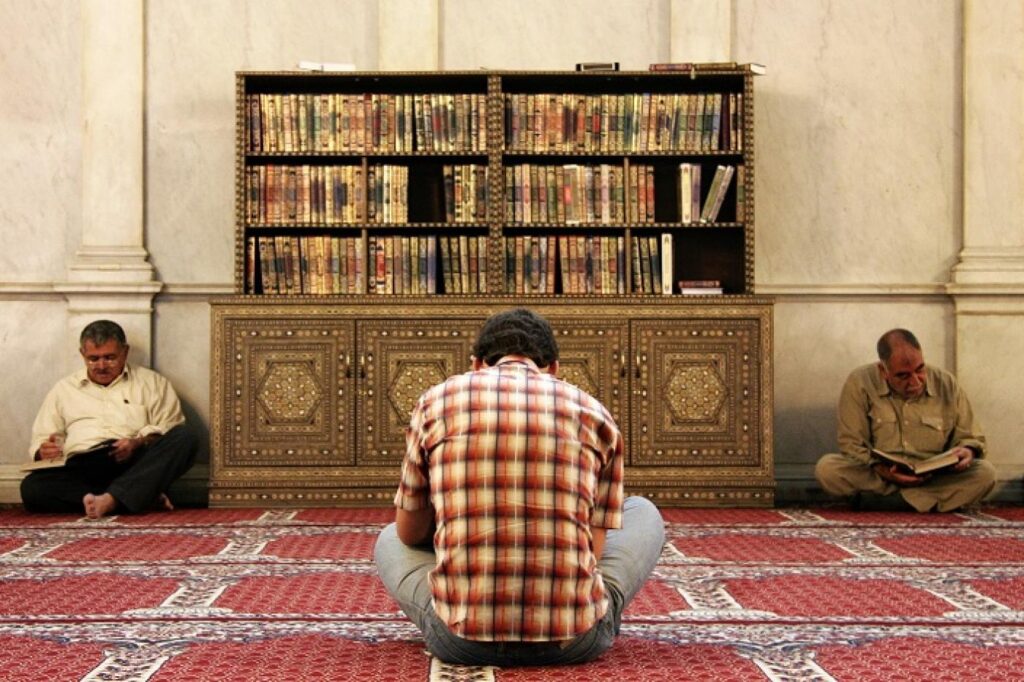
Al-Hafiz Yunus Omotayo Mainstream Muslims’ Misconceptions of Islam Versus Ahmadi Muslim Revivalist Thoughts (2) Misconceptions in Islamic legal-religious doctrines and laws [A] Mainstream Muslims’ Misconceptions about Freedom of Belief and Apostasy Widespread and deep-rooted misinterpretations of Islamic teachings on freedom of belief and conscience and Islamic attitude to apostasy abound in the mainstream Muslim thought. For example, Abul Ala Maududi declared that, ‘In our domain we neither allow any Muslim to change his religion nor allow any other religion to propagate its faith’.[23] The Quranic ordinance that ‘there shall be no compulsion in religion’ is explained away as ‘This means we do not compel anyone to embrace our religion. This is true. But we must warn anyone who wishes to recant that this door is impassable to free traffic. If you wish to come, do so with the firm decision that you cannot escape’. [24] As for the penal law for apostasy, mainstream Muslim jurists, like Abdul Qader ‘Oudah, in his Criminal Law of Islam, maintain that there are two punishments of apostasy: the one is primary punishment which is death penalty and the other is subsidiary which is the confiscation of property. [25] Maududi further elaborates that there are only two methods of dealing with an apostate. Either make him an outlaw by depriving him of his citizenship and allowing him mere existence, or end his life. The first method is definitely more severe than the second, because he exists in a state in which ‘he neither lives nor dies’. Killing him is preferable. That way both his agony and the agony of society are ended simultaneously. [26] Ahmadi Muslim Revivalist Thought Ahmadi thought re-states Islamic provision and advocacy for freedom of belief and conscience and maintains that Islam does not prescribe any physical punishment for apostasy. The punishment for apostasy lies in the hand of God Almighty, against Whom the offence has been committed. Apostasy, which is not aggravated by some other crime, is not punishable in this world. [27] According to this thought, Surah Al-kafirun, revealed in the early period of the Prophet’s [saw] ministry, is a direct statement of policy on the subject of freedom of conscience. The Prophet [saw] was asked to tell unbelievers there was absolutely no meeting-point between their way of life and his. As they were in complete disagreement, not only with regard to the basic concepts of religion, but also with regard to its details and other aspects, there could not possibly be any compromise between them. Hence, ‘For you, your religion, for me, my religion. [Q. 109:7] Similarly, the first Medinite Surah, Al-Baqarah, in its 257th verse, also declared in the clearest pronouncement on the subject of freedom of conscience thus: ‘There shall be no compulsion in religion. Surely guidance has become distinct from error. [28] Again, freedom of conversion is the acid test of ‘no compulsion in religion’. It cannot be a one-way freedom – the freedom to enter Islam, but not to leave it. There are ten direct references to recantation in the Quran: one in the Meccan Surah of Al-Nahl and the remaining nine in the Medinite Surahs. In none of these verses is there the slightest hint of capital punishment for those who recant. [29] Another reference is in Al-Nisa verse 138. It says: Those who believe then disbelieve, then believe again, then disbelieve and then increase in their disbelief will never be forgiven by Allah, nor will He guide them to the way.’ A recanter cannot enjoy the repeated luxury of believing and disbelieving if the punishment is death! [30] Furthermore, Ahmadi thought re-emphasize the Qur’ānic declarations that: “And say, ‘It is the truth from your Lord. Wherefore, let him who will, believe, and let him who will, disbelieve.” (Q. 18:30) Again, “And if your Lord had enforced His will, surely, all who are on the earth would have believed together. Will you, then, force men to become believers? (Q. 10:100) Ahmadi thought also carefully examined the Sunnah of the Holy Prophet [saw] and found no capital penalty for conversion from Islam to have been meted out by the Prophet [saw]. [31] [B] Mainstream Muslims’ Misconceptions about Islamic Law of Blasphemy It is true that Imam Ibn Taymiyyah (ra) (d.728/1328) strongly believed and adduced painstaking evidences to prove that the punishment from Sabb Allah wa Sabb al- Rasul (blasphemy) was death, and this view was shared by the Maliki jurist, Qadi ‘Iyad al-Yahsabi (d.544/1149) [32] Our modern era has also seen how the committal of blasphemy has found Muslims from East to West, campaigning for death or corporal punishment to be meted out for its offenders.[33] Consequently, a number of modern Muslim states and scholars have thus prescribed death penalty for blasphemy. Ahmadi Muslim Revivalist Thought Ahmadi Thought maintains that although blasphemy is condemned on moral and ethical grounds, no doubt, and it has been mentioned not less than five times in the Holy Quran [4; ; 4: ;6: ; 18: ; 63: ] but no physical punishment is prescribed for blasphemy in Islam despite the commonly held view in the contemporary world. [34] The cases of Ka’b bin Zuhayr and Ibn Zaba’ra are good examples. Both of them were gifted poets who composed satires against the Holy Prophet. [35] Similarly, the case of blasphemy committed by Abdullah bin Ubayy has been mentioned in the Quran [63:9]. In all the above cases, however, no physical punishment have been recorded against them, rather, they were all forgiven by the Holy Prophet. [36] In fact, the orthodox Qur’anic pronouncement on the punishment for blasphemers is clearly stated: “Verily, those who malign Allāh and His Messenger – Allah has cursed them in this world and in the Hereafter, and has prepared for them an abasing punishment.” (Q. 33:57-58). Thus, as to how the Holy Prophet and his followers should react to blasphemy, a number of Qur’anic verses stipulate bearing blasphemy with patience, adopting boycott as a protest against blasphemers or a gathering of persons where blasphemy is
Deformation and Reformation of Islam in the Modern Time [Part 2]
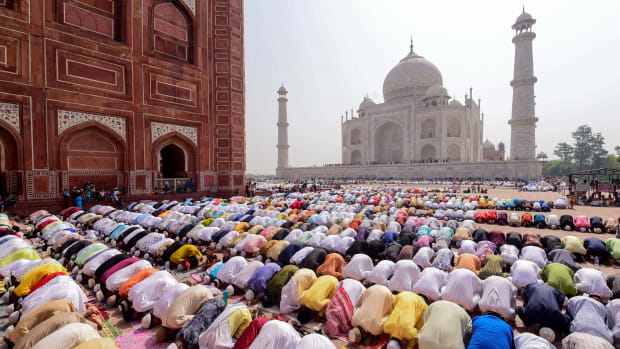
Al-Hafiz Yunus Omotayo Islam and the Challenges of the Modern Era As every thoughtful observe would admit, the dawn of the modern era upon Islam had dragged the Muslim world to the crossroads of modern challenges. Islam was being grossly misconceived, misinterpreted and misapplied by the mainstream Muslims. The global popularity of the religion of Allah had been reduced to a nominal identity. True, nobody would dispute the fact that the prevailing conceptions and interpretations of Islam in the modern times have been quite different from the Islam of the Holy Prophet’s time. Even celebrated mainstream Muslim scholars of the 19th and 20th centuries, like Sir Seyyid Ahmad Khan [1817-1898], Jamal Din Al-Afghani [1839-1897], Muhammad Abduh [1849-1905], Dr. Muhammad Iqbal [1876-1938] and Hassan Al-Banna [1906-1946] and a host of others, had all confessed through their various writings that the modern Muslims have been guilty of misconceptions of Islam. To them, Islam of the modern era was a misunderstood religion; a religion at the crossroads! A striking corroboration of the above observation may be seen in Faizur Rasul’s note that, “When the Muslim world was still under Western imperial control, Sir Muhammad Iqbal wrote his Reconstruction of Religious Thought in Islam, which implies the construction of Islam by the Holy Prophet and followed by his Righteous Caliphs had been deconstructed in the course of centuries which needed reconstruction, but he gives no programme how to do that. Apparently, he and others thought jihading and gaining political independence from the West alone would do the needful. It did not.” [4] The pathology of the misconception and misinterpretation of Islam which acquired its widest proportion in the modern era can be traced to the internal challenge of the lingering decline in the qualitative and unalloyed Islamic religious thought, faith and practice prevalent among the mainstream Muslims. The external factors may be linked to those challenges posed by the modern Western colonialism and its present offshoot – globalization of the Western civilization. This is because, as Thomas Benjamin asserted: “Western colonialism dispatched European colonialists to every inhabitable region, implanted and disseminated Christianity throughout the colonial world and exported the languages, laws, institutions, technology and values of the West to nearly all lands, peoples, and cultures worldwide. This political, economic, and cultural expansionism reshaped the non-European societies and cultures with which it came into sustained contact….. This history is not a closed and forgotten chapter without relevance to the problems and promise of today.” [5] In this light, it can be asserted that the tremendous intellectual, religious, cultural, economic and political warfare waged by the numerous Western colonialists, academic orientalists and Christian Missionaries against the totality of the Muslim world in the 19th and 20th centuries, coupled with the contemporary globalization phenomenon and the increasing tide of Islamophobia by the non-Muslim world have thus resulted into a complex conceptual and interpretative misrepresentations of Islam by both modern Muslims and non-Muslims alike. Consequently, the Islam we have in our modern era is such that has come with a variety of conceptually conflicting versions or brands. Thus, today, we most often read about ‘Islamism’, neo-Islamism, Salafism and neo-Salafism etc. Likewise, Islam is often prefixed with adjectives like ‘moderate’, ‘fundamentalist’, ‘radical-fundamentalist’, ‘extremist’ and ‘fanatical’ Islam and so on. AbdulFattah ibn Raji, citing Pittsburgh’s Civil Democratic Islam, distinguished four of such conflicting conceptual misrepresentations of Islam as: one, fundamentalists reject democratic values and contemporary Western culture. They want an authoritarian, puritanical state that will implement their extreme view of Islamic law and morality. They are willing to use innovation and modern technology to achieve that goal. Two, traditionalists want a conservative society. They are suspicious of modernity, innovation and change. Three, modernists want the Islamic world to become part of global modernity. They want to modernize and reform Islam to bring it into line with the age. Four, secularists want the Islamic world to accept a division of Church and State in the manner of Western industrial democracies with religion relegated to the private sphere. These groups hold distinctly different positions on essential issues that have become contentious in the Islamic world today, including political and individual freedom, education, the status of women, criminal justices, the legitimacy of reform and change, and attitudes towards the West. [6] It is equally instructive to note that these distinct positions have not been confined to academic sphere alone. They have found their cosmic expressions in the prevailing attitudes and situations in the modern Muslim citizenry and states. Hence, Dr. Saheed Timehin opined that the 20th century saw the birth of a conservative Saudi Arabia, a theocratic Iran, a radical Libya, a compromising Egypt and Gulf States, an authoritarian Pakistan and Sudan and a fundamentalist Afghanistan. All these are surrounded by a cosmopolitan adherence to Islam in West Africa and other parts of the world where the faith is characterized by discordant values and attitudes such as traditional piety, ignorant fundamentalism, cowardly liberalism and shameless syncretism.[7] At this juncture, however, it is expedient to note that, in line with the prophetic decree of history of Islam which predicted the cyclical occurrence of decline and revival of the religion, a substantial section of contemporary Muslim intelligentsia and populace have found some reasons to believe that the Prophet Muhammad’s (saw) prophecy of the grand renaissance of Islam in the modern era had found its fulfillment through the advent of the Promised Messiah and Mahdi in the person of Hadhrat Mirza Ghulam Ahmad [as] [1835-1908]. In 1889, Mirza Ghulam Ahmad established his Mahdi-Messianic movement – the Ahmadiyya Muslim Jamaat – and proclaimed the mission of removing all the misconceptions, misinterpretations and misapplications to which both the adherents of Islam and its detractors had subjected the religion, and return it to its pristine logical, reasonable, rational, peaceful, simple and humane nature which the Quran and Sunnah had earlier given it. It is compelling to note, as any objective study would reveal, that a unique characteristic of the modern re-interpretations and restatements of Islam being advanced by
Deformation and Reformation of Islam in the Modern Time [Part 1]
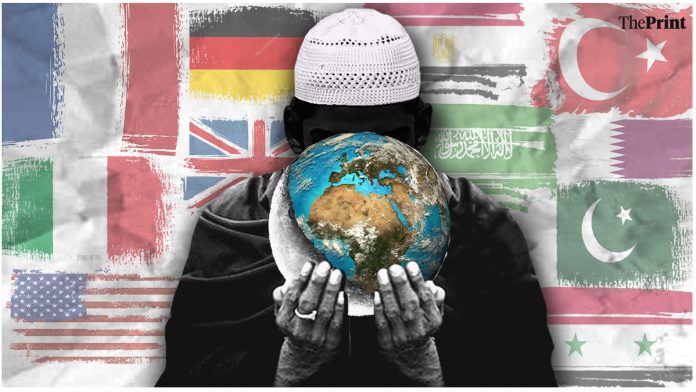
Al-Hafiz Yunus Omotayo Introduction Taking a look at the trajectory of Islam, a phenomenal experience evident throughout the centuries of Muslim history is the fact that, the farther Muslims moved away from the time of the classical era of the Prophet [saw] and the Righteous Caliphs, and the wider Islam became spread in the world and Muslims came in contact with foreign peoples, religions, cultures, civilizations and novel challenges, the more they faced challenges in their conception, interpretation and, ultimately, application of Islam in response to the emerging cosmic challenges. As a result, over the past centuries, Islam has been existentially made to pass through various periods of historical formation, deformation and reformation, of misinterpretation and re-interpretation, of decline and revival, and of deconstruction and reconstruction. Instructively, however, the unprecedented phenomenal proportion in which it has been, and is being, subjected to misconceptions and misinterpretations at the hands of some of its adherents and detractors alike in our modern and postmodern times calls for critical reassessment and, of course, reinterpretation and restatement. This piece attempts an analytical assessment of some of the misconceptions and misinterpretations of Islam in the modern time vis-à-vis the contemporary Ahmadi Islamic revivalist thought and ideology. Islam – Foundational Basis and Historical Formation Islam emerged on the global scene in the seventh century A.D. as a world religion [Quran, 25: 2] and a recrystalization of the ancient Mesopotamian and Abrahamic family of religious traditions. [Quran, 5: 16, 49; 22:79] It proclaimed a mission that seeks to actualize what it christened as ihyaa al-ardh ba’da mautihaa i.e. a revolutionary renaissance of the cosmos, of all ramifications of human intellectual, religious, social, economic and political existence [Quran, 57: 18]. Likewise, it envisions a globalization of the world order of Allah on earth [Quran, 61: 10], as well as, a realization of both terrestrial and celestial paradisiacal existence for the human race [Quran, 55: 47]. Recognizing the weak nature inherent in humanity [Quran, 4: 29], Islam set about to explain and guide mankind to the best course of human life, history and destiny [Quran, 4: 27]. Muhammad bin Abdullah (saw), the Holy Prophet of Islam, who is represented as the Seal of the Prophets [Quran, 33: 41], is the recipient of the Holy Quran [Quran, 25:2], the Divine Scripture of Islam, which embodies the fundamentals and details of the theological teachings, the legal doctrines and legislations, as well as, the socio-political and economic principles and systems of Islam [Quran, 16: 90]. In the 23-year span of his prophetic mission at Makkah and Medinah, Muhammad [saw], through his Sunnah [Practice], proffered divinely-sanctioned model prophetic conceptions, interpretations and applications of the Quranic teachings and worldview for the Muslims [Quran, 33: 22]. Thus, consensus exists that all the theological, theosophical, jurisprudential and ideological foundations of Islam are based on Divine Scriptural and Prophetic sources that are not only logical, reasonable and rational, but are also simple, humane, comprehensive, universal, realistic and responsive to the requirements of human and cosmic needs and demands. Based on this perspective, both the Quranic and Sunnatic conceptions and interpretations of the Divine Will and Commandments therefore serve as both the primary and secondary bases, the benchmarks, against which the correctness or otherwise of any human future conception and interpretation of Islam will always have to be judged. Consequently, at the culmination of the ministry of Muhammad [saw], the Quran proclaimed the perfection of the Islamic religion, and the completion of the Divine providence upon the Muslim world [Quran, 5:4]. Notwithstanding, however, alongside this proclamation exists the various predictions about: [1] the future misconceptions, misinterpretations and misapplications that would bedevil Islam, reducing it to a nominal existence [1], on the one hand, and on the other hand, [2] the emergence of divine religious reformers at the head of every century [2], and ultimately, the coming of the Imam Mahdi and the Promised Messiah for the global renaissance of Islam and the Muslim world of the end times. [3] Leveraging on the available commonwealth of the perfect conceptions and interpretations of Islam given by the Holy Prophet of Islam, the early Muslim caliphates, first the Arabs, then the Persians and later the Turks set about to interfere in human history and create classical Islamic civilization. Later, in the 13th century, both Africa and India became great centers of Islamic civilization and soon thereafter Muslim kingdoms were established in the Malay Indonesian world while Chinese Muslims flourished throughout china. However, by the nineteenth century – which we may view as virtually signaling the spatio-temporal rise of modernity – a global eclipse had dawned upon the global Muslim religion and civilization as a result of the misconceptions and misinterpretations with which Muslims and others have bedeviled Islam. What are those misconceptions and misinterpretations? Any resurgence or renaissance after the eclipse? ……..to be continued.
Muslim Children and Memorization of the Holy Qur’an

Al-Hafiz Yunus Omotayo To the Muslim children, those modern psychologists who say that the ages from 9 to 21 years are the most fertile periods for memorizing things and during which the memory can effectively keep the information, have said nothing but the truth. For, this is what they could prove by way of their experience which they have been able to get through the act of memorizing the Holy Qur’an. While both the young and old ones from among the Christians, the Hindus, and the Zoroastrians etc. have been unsuccessful to learn the entire texts of their respective Scriptures by hearts, it is a matter of fact that many Muslim children right from the earliest periods of Islam have memorized the Qur’an with ease at an age as low as 9 years. Indeed there have been hundreds of thousands of such children memorizers of the Qur’an while the number keeps on increasing every day. In fact, as Hazrat Mirza Bashirudeen Mahmūd Ahmad (ra) noted in his Introduction to the Study of the Holy Qur’ān, it is only among Muslim communities you would find that even “children who were born blind or who lose their sight during infancy are encouraged to commit the Qur’an to memory. This is done out of a feeling that as a blind person is not competent to adopt a normal occupation he can turn his handicap to account by becoming a guardian of the text of the Qur’an.” I see it worthwhile to relate here the story of ‘Amr bin Salama (ra) and the wonderful situation through which he committed the Qur’an to memory. Amr bin Salam was a young boy who lived during the time of the Holy Prophet (saw) but whose case is that of a little child of 7 years who had memorized large potions from the Qur’an at a time when Islam had not even reached his village and there was no Muslim living there at all, he himself has not accepted the religion at that point in time. One would definitely be interested to know how then he was able to learn the Qur’an by heart. Below is how ‘Amr himself told the story. He relates thus: “We were at a place which was a thoroughfare for the people, and the caravans used to pass by us and we would ask them, “What is wrong with the people? Who is that man?” They would say, “That man claims that Allah has sent him (as a Messenger), that he has been inspired divinely, that Allah has revealed to him such-and-such.” I used to memorized that (Divine) Talk, and feel as if it was inculcated in my chest. The Arabs (other than Quraish) delayed their conversion to Islam till the Conquest (of Makka). They used to say, “leave him (i.e. Muhammad (saw) and his people Quraish: if he overpowers them then he is a true Prophet.” So, when Makkah was conquered, every tribe rushed to embrace Islam, and my father hurried to embrace Islam before (the other members of) my tribe. When my father returned from the Prophet (saw) to his tribe, he said, ‘By Allah, I have come to you from the Prophet (saw) for sure!” The Prophet (saw)afterward said to them, ‘Offer such and such Salat (prayer) at such and such time, and when the time for the Salat (prayer) becomes due, then one of you should pronounce the Adhan [for the Salat (prayer)], and let the one amongst you who knows Qur’an most, lead the Salat (prayer).” So they look for such a person and found none who knew more Qur’an than I because of the Qur’anic material which I used to learn from the caravans. They therefore made me their Imam to lead the Salat (prayer) and at that time I was a boy of six or seven years, wearing a Burda (i.e. a black square garment) proved to be very short for me and my body became partly naked. A lady from the tribe said, ‘Won’t you cover the buttocks of your reciter for us?” So they bought (a piece of cloth) and made a shirt for me. I had never been so happy with anything before as I was with that shirt.” Truly, if the act of committing the entire Qur’an to memory is one of those distinctive glories of Muslims that make them and their Holy Scripture to be so unique among all other peoples and scriptures, then those among Muslim children who have memorized the entire Qur’an are indeed the very pride of Islam and the Qur’an because of the glory, the blessings and the good fortune which they have got. Similarly, if it is the will of Allah that the Qur’an be preserved till the Day of Judgment through the process of committing its entire text to memory by Muslims, then again, those among Muslim children who have been able to achieve Tahfiz-ul-Qur’an in their life are, in fact, the very pride of Allah the Most Exalted because they have used their talent, time and lives to fulfill the will of Allah in this world. Indeed such Muslim children are the delight of their parents and their future glory. They are the joy of their life and the satisfaction of their souls. And such children would indeed grow up to become the champions of Islam. Having embellished their childhood with the light of the Qur’an, they would certainly grow up to be the inheritors of the legacy of the Prophets and so become the successful and the prosperous. Culled from p. 35-37 of my book titled: Memorization of the Holy Quran: Merits and Methods
2021 EID MESSAGE: AMIR PROFERS POSSIBLE SOLUTIONS TO NATIONAL CHALLENGES

Bismillahir Rahmanir Raheem AMIR’S 2021 EID UL FITR MESSAGE Tashaahuud, Ta’’awuz, Basmallah, Suratul Fatha. ADORATION TO ALLAH We give all adorations and greetings to Almighty Allah who has granted us the will and strength to fast the 29 days fasting in the holy month of Ramadan which just ended. Alhamdulillah. CALLING BLESSINGS ON THE HOLY PROPHET MUHAMMED (SAW) We call for Allah’s blessings on the Holy Prophet (saw) who is a mercy unto mankind and the seal of all prophets. He has brought us spiritual, moral, and physical ways of behaving in the most peaceful ways which Ramadhan taught all Muslims. If all Muslims are peaceful in Nigeria and worldwide, Nigeria and the world will be a place of peace for all to live. IMAM OF THE AGE We call for peace of Allah on Imam Mahdi (as) who is the Imam of the age, Hazrat Mirza Ghulam Ahmad (as) whose advent was foretold by the Holy Prophet Muhammed (saw), the holy founder of Ahmadiyya Muslim Jamaat worldwide. May Allah be please with him and all the followers of the Holy Prophet Muhammad (saw) who had passed away. KHALIFA AND THE UMMAH May Allah be the Helper of Hazrat Masroor Ahmad, the Word-wide head of the Ahmadiyya Muslim Jamaat word-wide in his continuous quest for global peace. BLESSINGS OF RAMADHAN Fasting is one of the five pillars of Islam and Muslims all over the world. It is an ordinance or a commandment of Allah. It is one of the mandatory instructions of Allah in the Holy Quran. It is not optional for those who fall within the categories of those who should fast. Whoever is matured, healthy and not on journey must fast during this holy month of Ramadhan. This shows fasting is a unique exercise and one that has been enjoined by the creator not only for the Muslims but for all others who have followed one prophet at a time or the other. Fasting offers us an opportunity to deeply reflect over ourselves and the type of relationships we have with other human beings on one hand and with our creator on the other hand. Allah says in the holy quran chapter 2 verse 184: ‘’O ye who believe, fasting is prescribed for you, as it was prescribed for those before you that you may attain righteousness’’. The object of fasting is attainment of righteousness. Righteousness means nearness to Allah, doing of good and avoidance of all evils. The question to ask ourselves is whether we have attained righteousness or not during this just concluded month of Ramadhan. And if yes, how do we retain them without going back to any evil deeds whatsoever. This is a month of acceptance of prayers and the night of lailatul qadri or night of destiny. For our prayers to be accepted, Allah commanded us to listen to Him and have faith in Him. May Allah accept our prayers. ADMONITIONS TO THE GENERALITY OF MUSLIMS. We are expected to be more faithful in ALLAH, fearful of His glory, hold in Him in awe due to His majesty, we are supposed to be graduating from a training school in a metaphorical sense, and be able to itemize what we have achieved. We should be cognizance of the evil we are dropping. We should be discerning of the new virtue(s) we are assuming or embracing after Ramadan. We should be a new better creation now and forever. We should be magnanimous, kind-hearted, and more tolerant as we were during the month of Ramadan. Our prayers to Allah and religious devotions should be sustained to show that we have perpetually benefited from the month. Reverting to our evil ways is like losing it all. ADVICE TO THE GOVERNMENT FOR THE SAKE OF HUMANITY We call on the government; Federal, State, and Local to urgently address the concerns of the citizens of the country. No one needs to be told that there is tension, indeed, great tension in the land over what concerns the people. These concerns are many but a few of them are: The unrest in the country caused by insecurity, evil perpetrated by the notorious BOKO Haram, and now the latest addition banditry and herdsmen. Cases of kidnapping for ransom and unwarranted killing: Many innocent citizens have been kidnapped for no reason other than that they want ransom paid. Many were killed in the process. This is not expected in a country where there is good governance. A government and her agencies should provide security for the people and also secure their property. Hunger: There is hunger in the land as most farmers are not able to access their farms due to the terrorism of the herdsmen as it happened at Ibarapa and many other locations. Mass unemployment of the teeming youths in their millions. Jobs are not being created. This poses a grave danger and the easy platform for the recruitment of bandits and Boko Haram sympathizers. This avenue should be urgently blocked. Payment of interest at an alarming rate. This is to the extent that there is little or no income at all for the government to prosecute any project whatsoever as all the income of the nation is used to pay interest to few individuals plunging the country into spiritual war with Allah and his Prophet. Nigeria Oil Revenue projected for 2021 is ₦2.01trillion. The Non-Oil revenue is ₦1.49trillion both totaling ₦3.50 trillion. Meanwhile, interest is ₦3.32 trillion leaving only ₦180 billion for other expenditures. Statutory transfer alone is ₦500billion meaning that Nigeria has to borrow to fund those statutory transfers. Non-debt expenditure is ₦5.64trillion while Independent & Other source income is ₦4.48trillion leaving N1.16 trillion in deficit. It is zero funding for the capital of ₦4.13 trillion. Overall income is ₦7.98 trillion and overall expenditure is ₦13.59tillion. The deficit is ₦5.61 trillion. Debt is now been raised at interest to fund revenue non-productive expenditures. This keeps forcing Nigerian debt up. Government must avoid land and interest payment
IT’S A DOUBLE-HEADER FEAT FOR AHMADIYYA COMMUNITY AT APATA BRANCH

Sunday, 21st March 2021 will no doubt remained a memorable day for Ahmadiyya Muslim Jama’at of Nigeria as the Amir (National Head), Alhaji (Barr.) Alatoye Folorunso Azeez commissioned a new Mosque and laid the foundation stone of another one at the Apata (Oyo State) branch of the organization. The new Mosque is located at Bembo Area of Aba-Alamu, Apata, Oyo State. The land was donated by Pa Rauf Adekola and the foundation stone was laid on the 19th October 2019 by the then Central Missionary for the region, Maulvi Sadiq Raheem, and Branch President, Alhaji Teslim Oniyide. A total of 109 donors contributed to the construction. The Mosque can conveniently accommodate 75 worshippers at a go. Speaking at the commissioning event, the National Head appreciated the efforts of the donor and contributors towards the quick completion of the Mosque project after the former Mosque was demolished due to road expansion at Bembo Area. “It is a good sign for us all. Let us all strive to contribute financially and spiritually in the way of Allah like the donor who ensured that we establish a place of worship after the former one was affected by road expansion. “Let’s strive to always please God and improve the condition and sizes of our Mosques in order to accommodate more worshippers as much as possible especially during Jumu’ah service,” the Amir said. Foundation Stone Laying of Apata Central Mosque The Amir later proceeded to lay the foundation stone of the new Ultra-Modern Central Mosque at Apata and blessed the project with prayers. The Mosque project, which is being single-handedly sponsored by a family, is a story-building with the ground floor set aside for Car Park. When completed, it will conveniently accommodate hundreds of worshippers at the same time. Barr. Alatoye reiterated the need for all members to reform themselves internally and eschew personal grudges and differences in order to win more converts into Ahmadiyya Muslim Community. “We should always think big on how to expand our Mosques across the country. Also, there is a need to put into practice what we preach to outsiders. Let’s move on from personal grudges and fighting. We will progress and convert many people when we embrace peaceful coexistence.” “Let us always pray for the elevation of all members. It will be a good omen when this happens. Let us look for money in a legit way and contribute meaningfully to the progress of the organization. Let’s imbibe humility and do away with arrogance”, the Amir reiterated.
MINARET UNIVERSITY FOUNDATION STONE FINALLY LAID
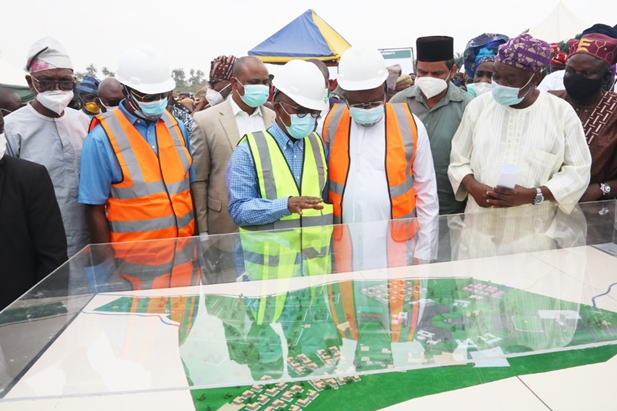
With the gracious approval and blessings of its Supreme Head, Hadhrat Khalifatul Masih V, the Ahmadiyya Muslim Community has eventually laid the foundation stone of the Minaret International University, Ikirun, Osun State. The much-anticipated foundation stone laying was performed by the Executive Governor of Osun State, Alhaji Adegboyega Isiaka Oyetola, witnessed by top dignitaries including government officials, traditional rulers, and personalities across the country. Recall that the organization had embarked on the University Project in 2017 with the processing of Certificate of Occupancy (C of O) and documentation with the National Universities Commission. The Ahmadiyya Muslim Community known to be a pioneer of Muslim education in Nigeria intends to establish a world-class tertiary institution for the intellectual and manpower development of human resources for sustainable socio-economic development nationally, regionally, and internationally. The University will also focus on environmentally sustainable growth and development of all aspects of agriculture, energy and transportation infrastructure, water and natural resources manufacturing and processing, management sciences, engineering, communication technology, humanities as well as scientific and technological research relevant to global development problems and challenges. Governor Oyetola lauded Ahmadiyya Community for its roles in educational development as well as humanitarian services within the country and across the globe. He believed education and religion are timeless and potent instruments for the development and transformation of society. “The expediency of these two tools is even more compelling today that the society requires moral and ethical rebirth. It is therefore heartening that Minaret International University is combining religion and education to build the character of our youths and help them to acquire knowledge to deliver the future that we desire. “Our Administration considers education and good moral standing as essential tools for building leaders of tomorrow and ensuring sustainable development. In line with the belief of the State that government cannot solely provide the education the State needs, successive governments have encouraged willing individuals and groups to establish schools at all levels. Consequently, Osun is home to top-notch tertiary institutions that are making their contributions to the development of the State and the nation. “The establishment of Minaret International University is a welcome addition to this family. As a notable knowledge-seeking and religion-savvy institution known for its tradition of excellence, I have no doubt that Ahmadiyya Muslim Jama’at will build a University that is a Centre of excellence in deed and in truth. I am also persuaded that the organization will produce graduates who will be problem solvers and job creators. “Ahmadiyya Muslim Jama’at of Nigeria has proved over the years to be a frontline Muslim organization in the propagation of the Islamic faith. It has also demonstrated an irredeemable commitment to the peace, progress, and welfare of the people and State of Osun and the nation. These contributions are traceable to the visionary leadership of the organization. “On behalf of the Government and people of Osun, I appreciate the leadership of this notable organization for its services to humanity and the decision to site this University in Osun, which will further expand access to tertiary education and also contribute to the development of our State,” the governor added. The Amir (National Head) of the organization in Nigeria, Barr. Alatoye Folorunso Azeez, in his address, heartily appreciated the good support and neighborliness of the State government and the host Community towards the success of the foundation stone laying event. “We are most grateful to the host Community of Ikirun, the immediate past Akirun of Ikirunland, His Royal Majesty, Late Oba Abdul Rauf Olawale Adedeji II, and the Osun State Government for the strong support to the actualization of this dream. Most importantly, we are very grateful to His Holiness, the worldwide Head of Ahmadiyya Muslim Jama’at for his kind approval of the University to be sited at Ikirun in Osun State. “MIU is owned by 215 Countries where Ahmadiyya Muslim Community has been formally established. It is the first of its kind globally, innovative University with a difference designed to promote academic excellence, moral discipline, and the spirit of selfless service for the advancement of socio-economic development, the emancipation of the people, and commitment to global cooperation for development and unity of humanity. “The philosophy of MIU is to guard against alcoholism and drug addiction, ensure banishment of cultism, embrace theory and practical/work approach, practical entrepreneurship training, embrace sports, physical fitness and martial arts and strict enforcement of moral discipline. The tuition fees will be moderate and affordable for brilliant students,” Barr. Alatoye stated.
